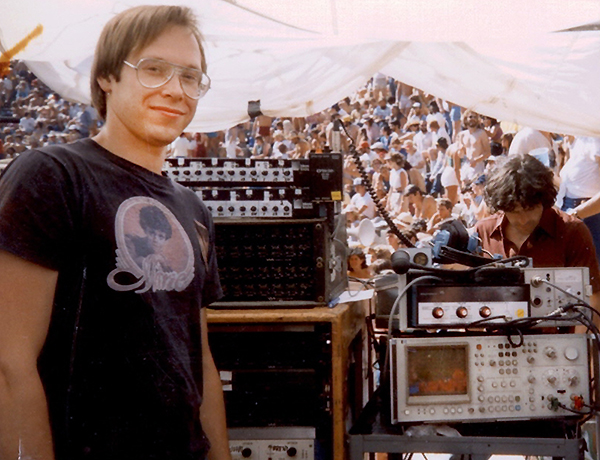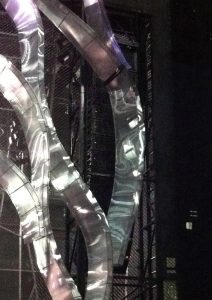
11) Keep the magic out. If it’s too good to be true, it is. If the laws of physics are being violated, they aren’t. There is something else going on. Find it.
12) Use good ingredients. Any chef will tell you this. Good loudspeakers, good processing, good analyzer, good mics and (I’m pushing it now) good acoustics.
13) Have a plan A for every loudspeaker. The main covers row 9 to 23. Down fill gets row 9 to 3 and front fill row 1 and 2. Overbalcony delays take the top 3 rows. Plan A lasts until the first shot is fired.
14) Have a plan B for every loudspeaker. The mains can’t stretch all the way, so either we aim them down and make the overbalcony loudspeakers cover more rows or aim them up and extend the reach of the down fill. Now let’s see if the down fill makes it the front fill meeting point.
15) Have expectations. Visualize the trace that should come up on screen before you measure it. If it’s different, then figure out why. Were my expectations wrong, or is something else going on here?
16) Know physics. Be fluent in time/frequency and phase conversions. This is critical for everything to do with optimization. Be fluent in 20 log dB scale conversions to linear ratios. This governs loudspeaker transmission over distance (the inverse square law) and summation of sound sources. Understand summation. Be capable of comb scene investigation (CSI). Read the comb filter fingerprints to see whodunit. It’s all there in the linearly spaced peaks and dips. If we identify the correct reflection we might get the acoustician to fix it.

17) Prove the design. This is not a passive pursuit where we observe loudspeakers and turn processor knobs. Prove the loudspeaker aim, splay angle and uniformity of the transitions from zone to zone. If the design is disproved it can be improved (along with your ability to design the next one).
18) Use your time wisely. I don’t mind if most of the time budget is spent on aiming, splaying and spacing the loudspeakers. That’s where the big payoff is. The most effective uniformity aid is optimized speaker position. EQ is easy with good loudspeaker locations and can work well for a large area. EQ is also easy with bad locations but only helps a much smaller area of the room.
19) FFT analyzers must be dual channel with minimum 24 points/octave. Amplitude, phase, coherence and impulse response. It’s critical to have complete confidence in your analysis system.
20) Place microphones strategically. We’re looking for specific answers to specific questions. A mic in the middle (ONAX) does EQ. Mics at the edges tell us if it’s aimed right (top and bottom for vertical and side for horizontal). A mic between two subsystems tells us if splay angle or spacing is right.
